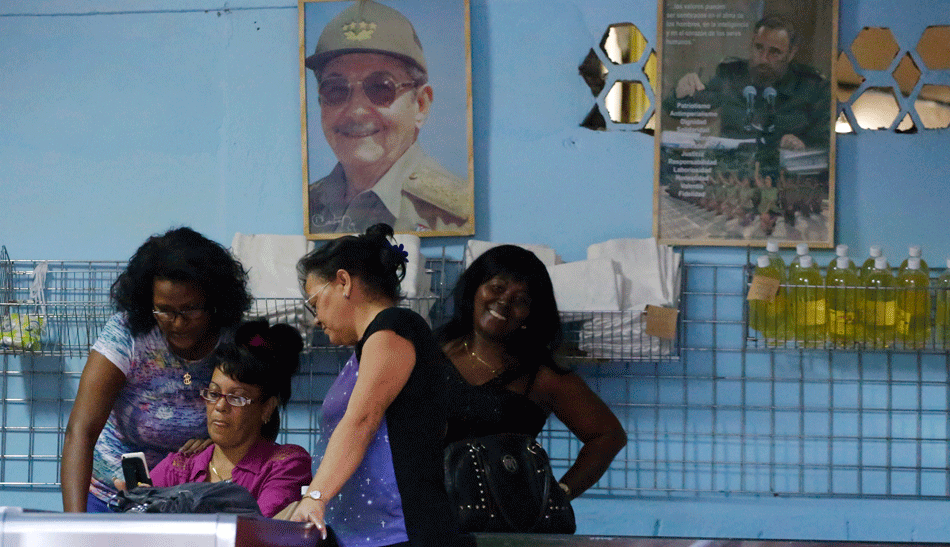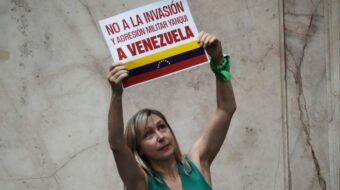
The State Department announced January 23 that it “is convening a Cuba Internet Task Force composed of U.S. government and non-governmental representatives to promote the free and unregulated flow of information in Cuba. The task force will examine the technological challenges and opportunities for expanding internet access and independent media in Cuba.”
The action was in line with President Trump’s memorandum in June 2017 on “Strengthening the Policy of the United States toward Cuba.” It conforms also with the Defense Department’s recently released “National Defense Strategy,” which indicates that “Today every domain is contested—air, land, sea, space, and cyberspace.”
In notes delivered to the U.S. embassy in Havana and to the State Department in Washington, Cuba’s Foreign Ministry rejected U.S. “pretensions of flagrantly violating Cuban sovereignty,” and demanded “again that the U.S. government end its subversive, meddling, and illegal actions which are attacks on Cuba’s stability and constitutional order.”
The task force is by no means an innovation. For decades the U.S. government has flooded Cuba with propaganda aimed at turning Cubans away from their government. With facilities on the Swan Islands, near the Honduran coast, the CIA’s Radio Swan began broadcasts to Cuba in 1960. The Reagan administration in 1981 set up a task force whose job was to prepare for broadcasts from Miami. Radio Martí commenced operations in 1985, TV Martí in 1990.
Under the authority of the Helms-Burton Law of 1996, which called for building a political opposition in Cuba, the Clinton administration expanded propaganda operations in order “to open Cuba’s closed system and promote the growth of an independent civil society.” Changes in messaging would henceforth center on the internet.
U.S. agencies sought “to offer Cubans interactive access to materials from abroad” and to connect internet platforms in the United States with networks in Cuba. The U.S. Interests Section in Havana, precursor to the present embassy, offered courses to Cubans on managing the internet and blogs.
There were special projects. For example, the “ZunZuneo” scheme of the U.S. Agency for International Development (USAID) in 2009 sought to bombard Cuban young people with direct messages through a program similar to Twitter. The Office for Cuba Broadcasting mounted its “Piramideo” program through which in 2011 a contractor sent 24,000 text messages each week to Cubans, having immobilized Cuban barriers beforehand. “Project Commotion” provided specialized equipment for dissidents active on the internet, thus enabling them to communicate easily with supporters abroad.
Throughout the entire era of shifting modalities, millions of dollars in funding were dispersed among U.S. agencies charged with implementing the interventionist programs.
The Obama administration continued in the same vein. In the wake of its opening to Cuba in late 2014, the U.S. telecommunications industry gained approval for establishing commercial ties with Cuban enterprises. For almost all other sectors of the U.S. economy, commercial relations in Cuba remained off limits.
Of the $20 million the U.S. government was spending annually on winning friends in Cuba, Obama’s administration dedicated a large portion to digital projects. Speaking to the press on December 19, 2014 Obama extolled “the prospect of telecommunications and the Internet being more widely available in Cuba. [That] chips away at this hermetically sealed society.”
In a public event February 7, the State Department inaugurated its Cuba Internet Task Force. A press release indicated that, “the task force agreed to form two subcommittees, one to explore the role of media and freedom of information in Cuba, and one to explore Internet access in Cuba.” The task force, unbudgeted, will meet next in October to hear reports from the subcommittees and to make recommendations.
Deputy Assistant Secretary for Western Hemisphere Affairs John S. Creamer chairs the group. Members include the Office of Cuba Broadcasting, responsible for operating Radio and TV Martí; the Federal Communications Commission, the telecommunications section of the Department of Commerce; USAID; and Freedom House.
Freedom House, ostensibly independent, in 2016 received 82 percent of its funding from the U.S. government. One expert holds that Freedom House has long served the CIA by providing foreign media with reports and analyses reflecting official U.S. perspectives.
At the meeting, according to a report, “several Cuban dissidents used a public comment period to lambast Cuba’s government, drawing comparisons to World War II and to the governments of Syria and Iran. Yet most of the public comments centered on a critique of a decades-old economic embargo and Trump’s policy toward Cuba.”










